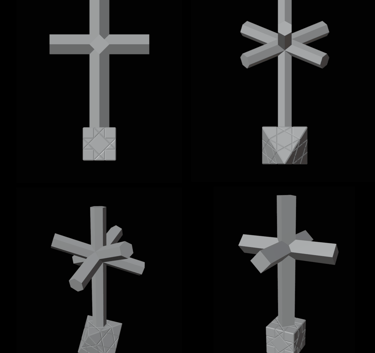ERKENWALD


At the core of James’ lecture to the Remembering Erkenwald at Soulton conference, 2024, is a tradition of harmony (or harmonics) represented within sacred art. This tradition connects the composition of Soulton Hall with the design of the shrine for St Erkenwald in the Old St Paul’s Cathedral, as well as other masterpieces earlier and later. The cognitive technology required to appreciate this weighty subject is entirely focused upon visual arts. For this reason, a private viewing of lecture props, commissioned art and collected art from the world of Byrga Geniht complements the lecture.
The exhibition is accompanied by Harry Frost’s performance of the Middle English poem, Erkenwald.
BORN DEEP IN THE EARTH
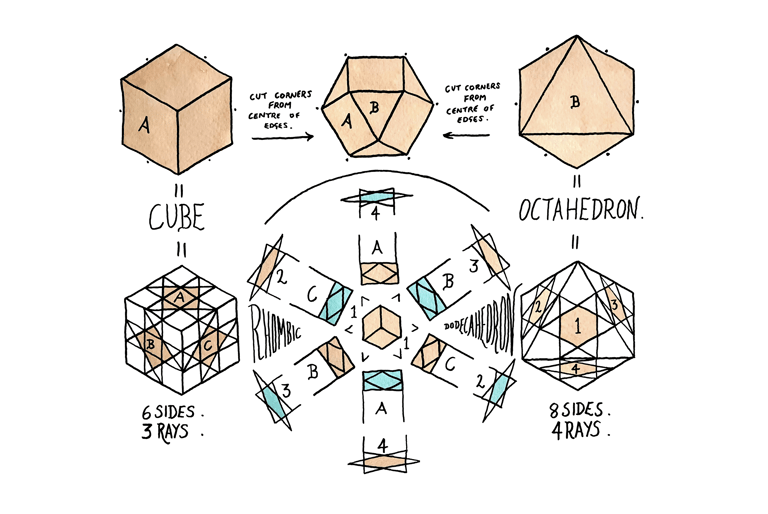

The first display includes natural garnet crystals in their euhedral, rhombic dodecahedron form. This form is imposed upon the crystals by the chemical structure of garnet, and the stones are naturally found with this geometry. The mineral samples are complemented by James D. Wenn’s tea towel art demonstrating the geometric relationships between the cube, cuboctahedron and octahedron with the rhombic dodecahedron, along with the importance of the Auseklis/poised square and the hexagram in navigating this geometry.
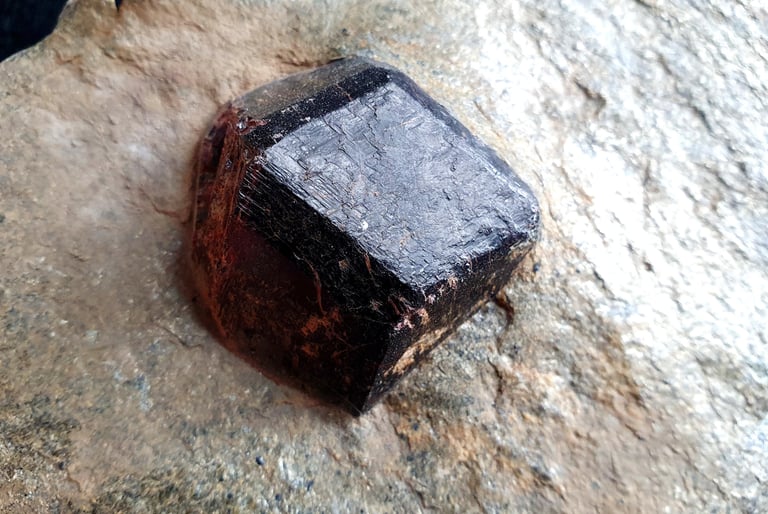

ANGLO-SAXON HARMONICS

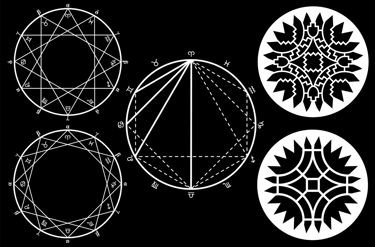
This display contains lecture props with which James D. Wenn lectures at Sutton Hoo with the Thegns of Mercia group. The replica Sutton Hoo scabbard bosses by Danegeld Historic Jewellery are explained by the aluminium art by James Syrett, which shows diagrams from Ptolemy’s Harmonics that formed the basis for the gold and garnet design. The reception of classical learning in Conversion-Period Anglo-Saxon East Anglia challenges narratives of discontinuity in philosophy and the Arts.
This display is connected to a paper published on the Thegns of Mercia blog.
THE AUSEKLIS IN THE STAFFORDSHIRE HOARD
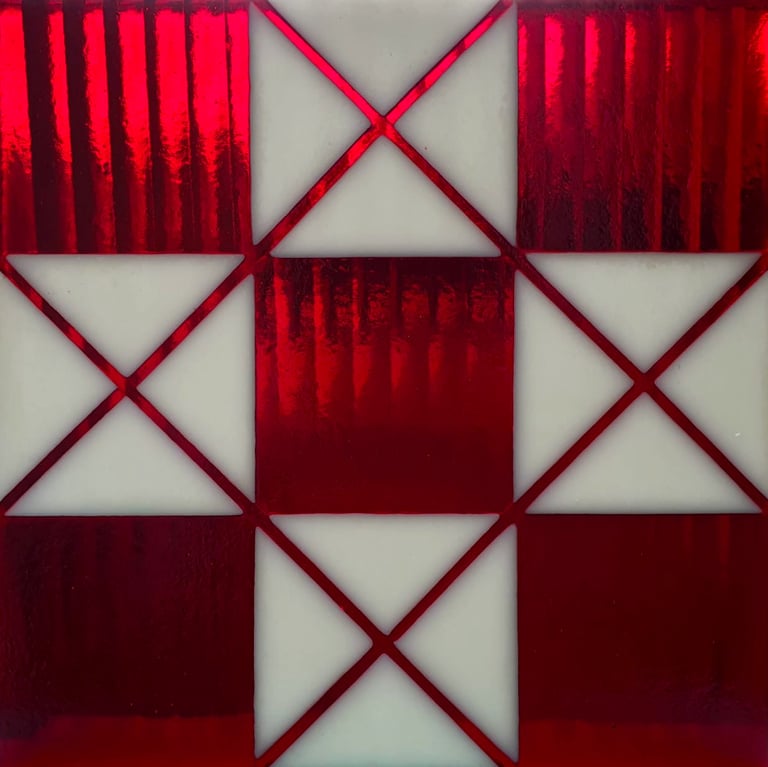

Here the guide to the Staffordshire Hoard Anglo-Saxon treasure (C. Fern, T. Dickinson and L. Webster, eds., The Staffordshire Hoard: an Anglo-Saxon Treasure (London, 2019)) is opened in the catalogue to show a sword pyramid pair whose apexes hold tiny millefiori glass art of the Auseklis. This is accompanied by glass art by Caroline Weidman showing the pattern greatly expanded as a plaque, and also the technique of making the original miniature millefiori.
This display is connected to a paper published on the Thegns of Mercia blog.
THE COSMATI PAVEMENT
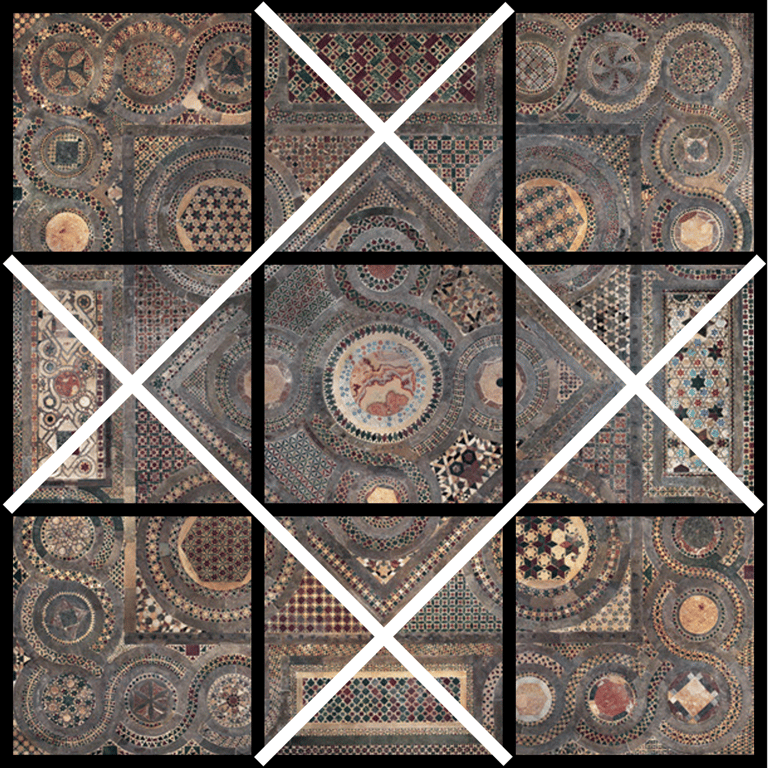

The research of James D. Wenn and James Syrett has uncovered how the design of the coronation pavement in Westminster Abbey, created for Henry III in the thirteenth century, is not only based on the Auseklis — in order to define a volume of space that is a rhombic dodecahedron — but also contains hexagons representing the other projections of the volume around the throne. This discovery is illustrated through an aluminium print with the Auseklis superimposed upon the Cosmati Pavement, prepared by James Syrett. A replica of the Great Seal of Henry III is placed to show the relationship between the thronosis / enthronement ceremony and the wider geometry.
THE HOLY ALMANDAL
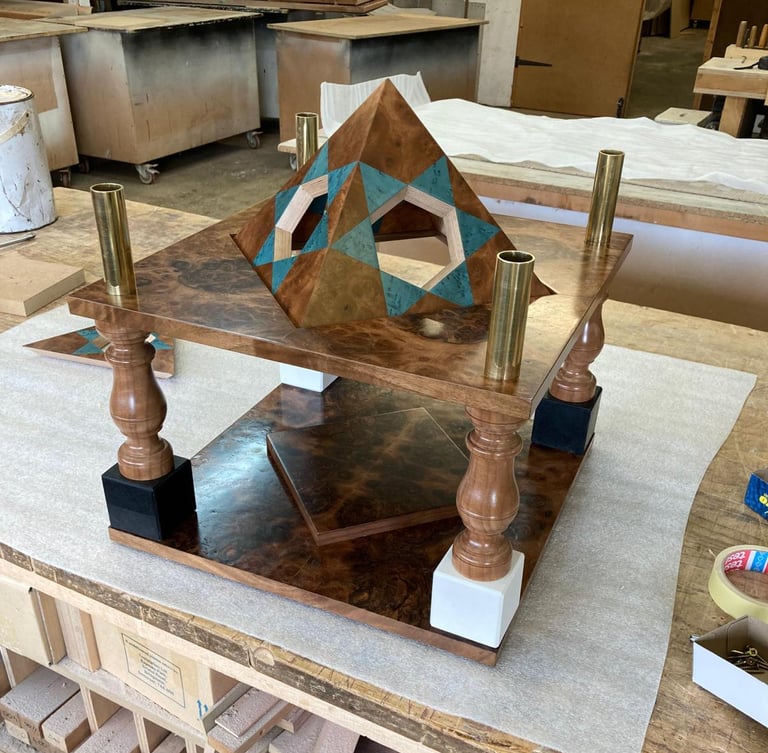

In the fourteenth century a beguiling and internally confused tradition of manuscript illustrations grew around a core text describing an instrument to ‘summon an angel’. An output of James D. Wenn’s research into the Cosmati Pavement and the Anglo-Saxon precursors to this art has been to bring clarity to what original intention the text may have expressed. James’ theory has explanatory power regarding the later garbled angelic claims because the instrument described would make a projection of light into smoke delineating a rhombic dodecahedron, and the Middle Ages lacked words such as hologram. The connection between the rhombic dodecahedron and garnets (carbuncles, ergo ‘embers’), and the geometrical harmonies noted by Plato, recommend an association between the shape and the conformed soul in allegorical readings of the Vision of Ezekiel in the Bible.
Shay Shani has worked with James D. Wenn’s scholarship to craft a wooden model of an Almandal according to James’ theory. Displayed alongside this is tea towel art by James D. Wenn which illustrates the projected image that the model would produce if its candles and incense were lit in a dark room.
The text on the Almandal tradition is provided for reference: Jan R. Veenstra, 'The Holy Almandal: angels and the intellectual aims of magic', The Metamorphosis of Magic from Late Antiquity to the Early Modern Period, ed. J.N. Bremmer and J.R. Veenstra (Leuven, Paris, Dudley MA, 2002), pp.189 to 229.

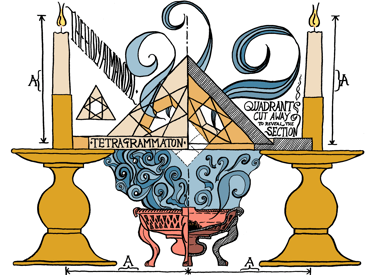
TETRACTYS
This work of art is a collaboration between James D. Wenn (scholarship), Shay Shani (frame) and Caroline Weidman (glass counters). The frame is inspired by the pediment of the shrine of St Erkenwald in the Old St Paul’s Cathedral in London. The counters display hand painted numbers floating within glass amid clouds of shimmering mica. The numbers relate to Plato’s Lambda and the Tetractys or pyramid of dots. Together these create a mathematical grid that provides the proportions that formed the basis of Western music from ancient times onwards. The art also highlights the central hexagonal feature of the Erkenwald shrine, which connects to the Almandal tradition of representing the divine.
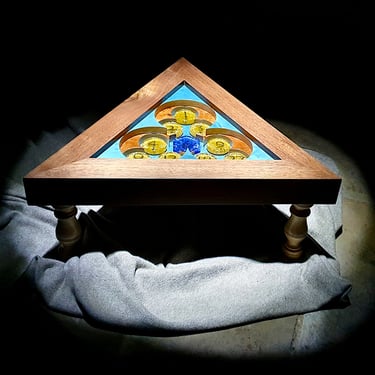
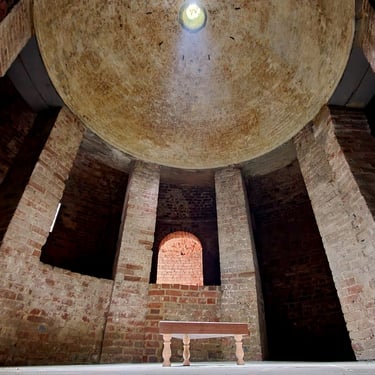


CERAMICS BY TERESA CLAY
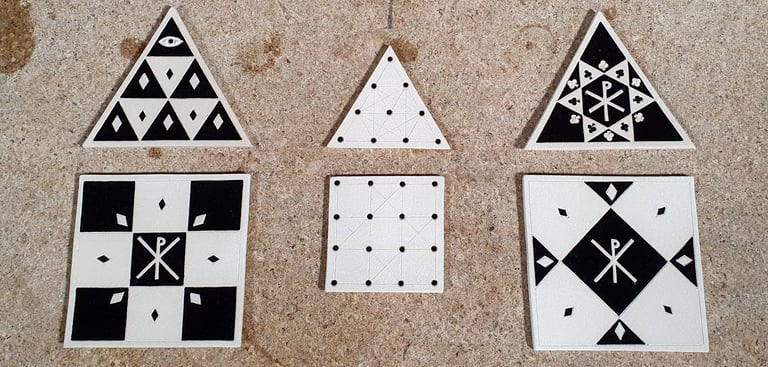

This display of ceramic art represents a collaboration between James D. Wenn and Teresa Clay. The items on the left of the display are pieces which Teresa made in the traditions of the visual arts deeply embedded in memory. On seeing and acquiring these for Byrga Geniht, James collaborated in the creation of a new set of designs inspired by sacred numerology and geometry from the Hinton St Mary Mosaic to the Shrine of St Erkenwald. These designs are arranged in the centre of the display. On the right are two sets of lozenge tiles with chess pieces representing the diapered brickwork in Soulton Hall, discussed in the lecture.
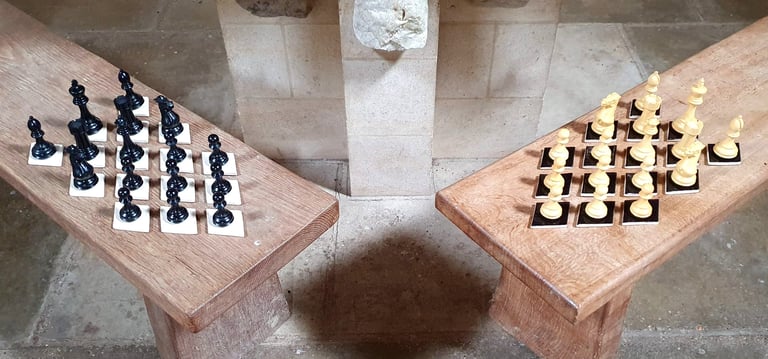

SHRINE BY CATRIONA FAULKNER
These two works were acquired by James D. Wenn and James Syrett at Catriona Faulkner’s exhibition at Spread in Chelmsford in 2024. For James and James these represent the unrivalled power of the visual languages of sacred art in expressing the deepest human experiences — relationships between physical realities of pain, suffering and mortality, and a transcendent world of beauty and the divine.
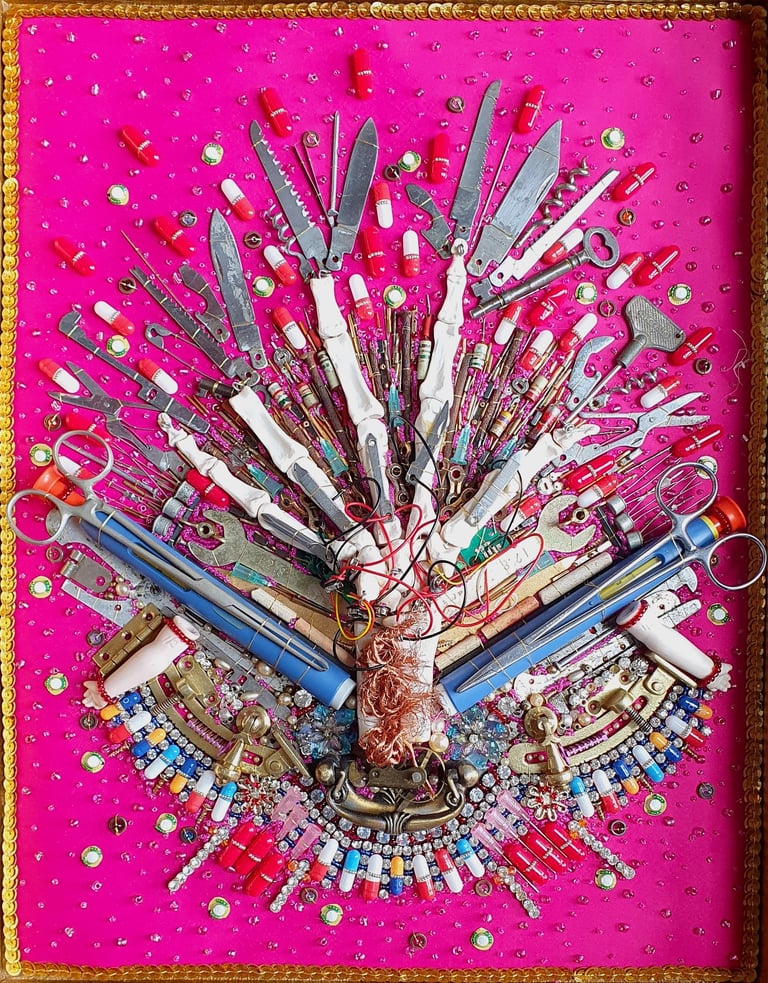

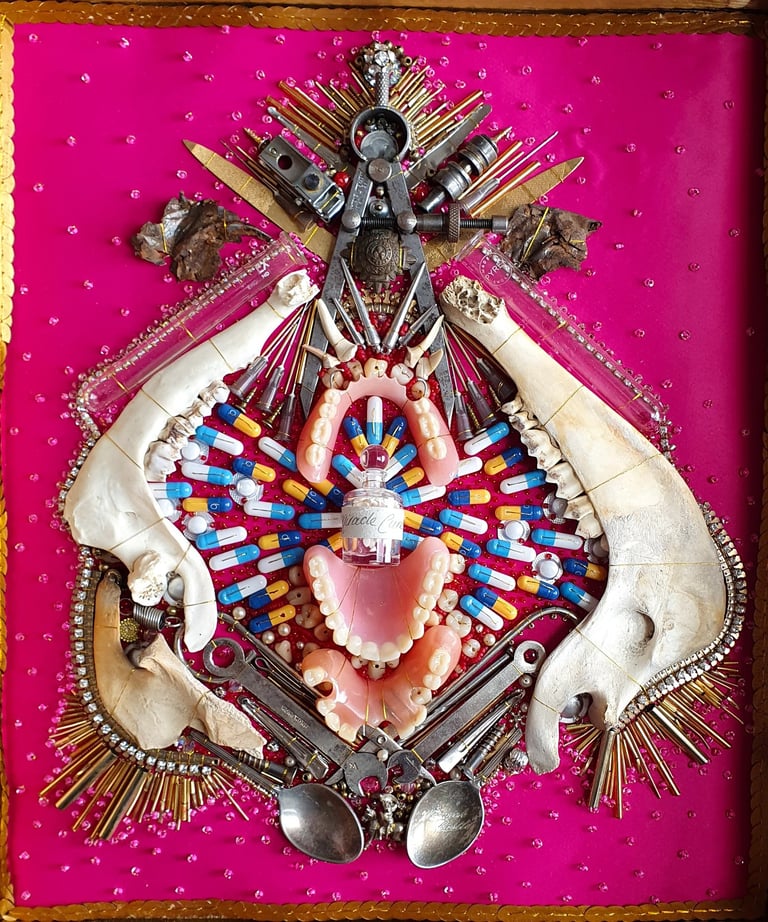

The Perfect Fix
Artist Catriona Faulkners work draws reference from her own experience of living with chronic pain as the result of an industrial accident to her right hand in 2000. In this piece The Perfect Fix the artist has rebuilt her own reliquary to the notion of her own mechanical bionic hand. Twisted copper wire emulates the tumours buried in her wrist that morph into a hybrid multi tool where fingers are no longer in pain but full of essential and useful equipment. The skeletal, robotic hand ( with the artists iconic part digit removed) is surrounded by the medications, injections and instruments that went before, imbedded with trauma and hypervigilance.
Spoonful of Sugar
Spoonful of Sugar directly references the artists own battle with chronic pain and the continuous rounds of different drug trials endured and medications she has been prescribed. Experiences the artist has traversed, subsequently created intrusive nightmares, whereby fist fulls of tablets were being fed to her like delicious sweets, can been seen here surrounding the layers of chomping teeth and jaw bones as an explosion of tablets surround a tiny bottle of “miracle cure”. Here Catriona has used measuring equipment, scissor clamps, test tubes and syringes from her personal collection to explore notions of the perfect patient - one size does not fit all.
Catriona Faulkner
Catriona’s work can be deceptively comfortable and appealing as the viewer is immersed and seduced by the opulence and intrigue of the process, however delve into her language of materials and narratives that lurk behind the surface and you are exposed to a personal world and language responding to chronic pain and devotion.
Her practice reflects an ethos of using found objects with intrinsic interest to create, gathering and collecting from life’s forgotten mundane detritus. She then recontextualises this undisguised treasure finding a beauty within, painstakingly breathing life into these inanimate objects. Catriona’s use and selection of materials enables a sense of the familiar and recognisable but is reframed and presented in a new context and configuration, objects take on a different role, a hybrid identity of something familiar but transformed, recoded at the same time through placement, selection and relationship. Embedded throughout the work is an underlying questioning in why and how objects gain value and occupy memory in us all throughout cultures and faiths.
IN HOC SIGNO
This aluminium print of a 3D render by James Syrett illustrates the design of a work in progress currently at a foundry being hot cast in bronze, which will then be gilded. In two pieces, this work, In Hoc Signo, represents the Vision of Constantine two different ways — intersecting beams of light (here solidified into gold) make identical rhombic dodecahedrons (in the manner of the Almandal). The name relates to the words within Constantine’s vision (‘in hoc signo vinces’, ‘in this sign shall ye conquer’) and the Christogram IHS. The name also instructs the viewer to construct what is hidden within the piece (the rhombic dodecahedrons) in their mind — the allegory of harmony is not the outward appearance but the Form towards which its geometry leads us.
